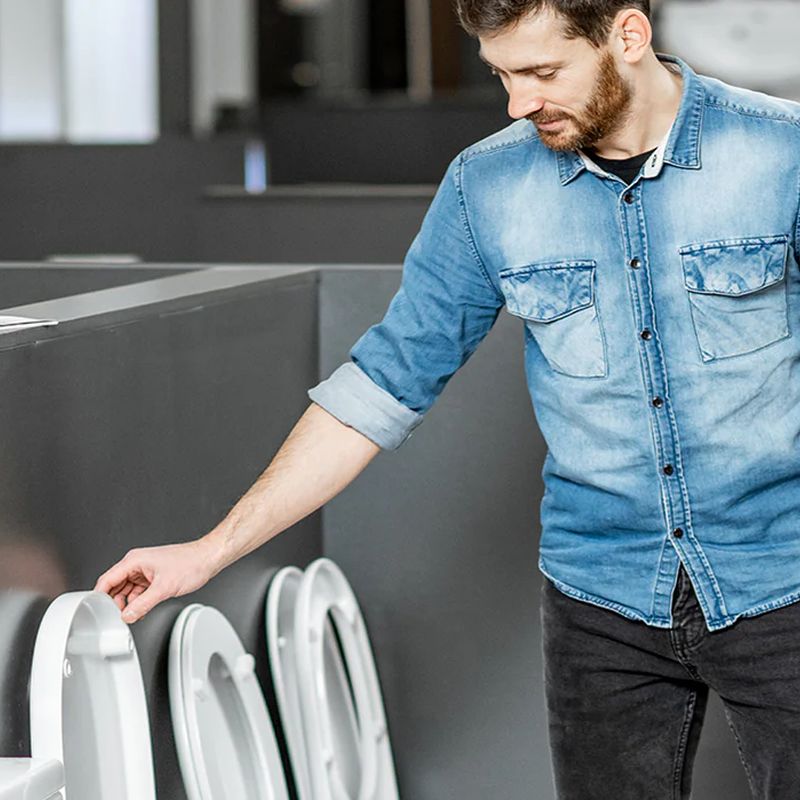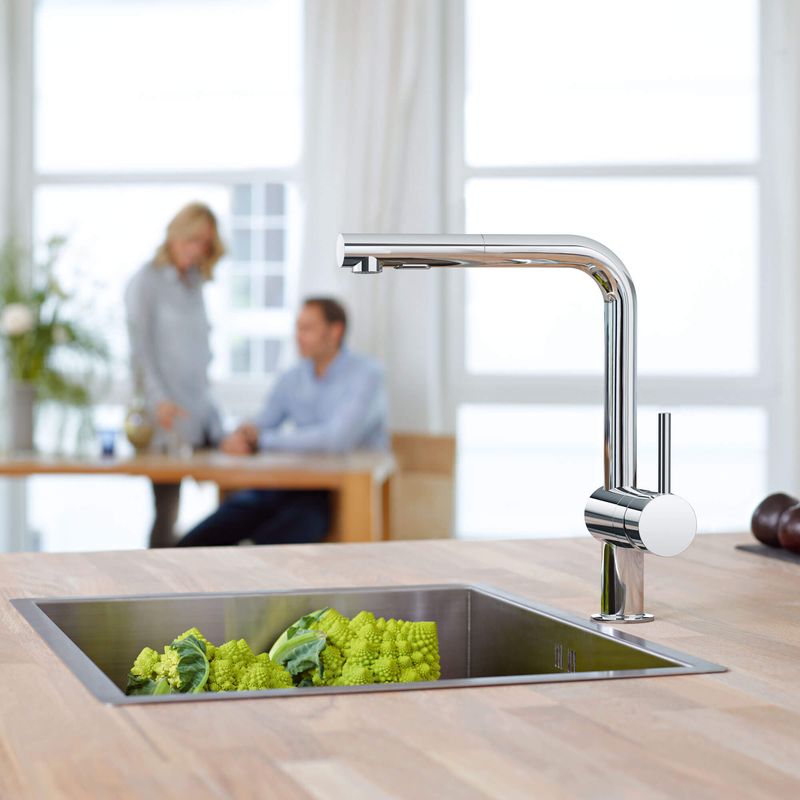 English
English
Jabra Sanitary is a sanitaryware supplier offering toilets, sinks, faucets, bathtubs, etc., at competitive prices. If you're a distributor, wholesaler, or project contractor, get a quote today!
 $23.9 Limited-time Offer
$23.9 Limited-time Offer Consignment Policy
Consignment Policy 20 Years of Experience
20 Years of Experience
Low-flow toilets are a revolutionary innovation designed to reduce water usage per flush. However, the low flow toilets problems often arise. Therefore, it is essential to understand their root causes and effective solutions.
This article mainly examines the most frequent problems with low-flow toilets and offers practical tips for fixing them. Whether you're a homeowner aiming to troubleshoot or a professional seeking to refine your expertise, this guide will provide the insights you need to keep your low-flow toilet running efficiently.

Table of Contents
What Is a Low-Flow Toilet?
Common Low-Flow Toilet Problems and How to Fix Them
Understanding Low-Flow Toilets Sewage Backup
Maintenance Tips to Avoid Common Low-Flow Toilet Problems
Low-Flow Toilets Pros and Cons
The Cost to Install a Low-Flow Toilet vs. a Regular Toilet
Alternatives to Low-Flow Toilets
FAQs
Final Thoughts: Are Low-Flow Toilets Worth It?
What Is a Low-Flow Toilet?
A low-flow toilet, also known as a high-efficiency toilet, is designed to use less water per flush than traditional models. <Related: High efficiency toilets vs regular>
While older toilets typically use 7 gallons of water per flush, low-flow toilets use 1.6 gallons or less. This significant reduction in water usage helps conserve this precious water resource and can lead to substantial savings on water bills over time.
Low-flow toilets achieve their water-saving performance through innovative fixtures and gravity-fed and pressure-assisted flushing mechanisms. Low-flow toilets have become increasingly efficient and reliable, making them a smart choice for environmentally conscious homeowners.
Common Low-Flow Toilet Problems and How to Fix Them
Low-flow toilets are an eco-friendly and water-saving option. But they can sometimes cause problems that hinder their functionality. Here's a detailed look at the common low water toilets problems and practical solutions to fix them:
Toilet Not Flushing
One of the most common problems with low water consumption toilets is inadequate flushing power. If your low flow toilet is not flushing properly, it could be due to a clogged trap or a faulty flush valve.
To solve this low-flow toilet not flushing problem, ensure the flush valve is working correctly and not clogged with debris. Additionally, make sure the tank has enough water, as low water levels can affect the flush power.
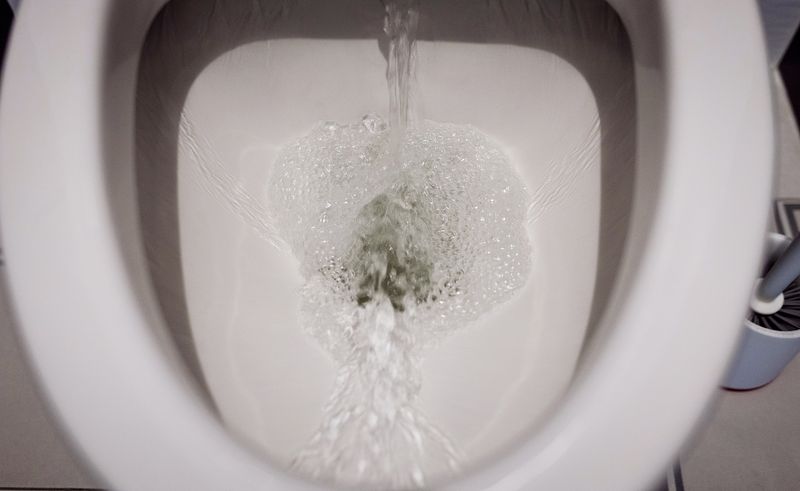
Toilet Keeps Clogging
A low-flow toilet might keeps clogging more often if the drain line is too narrow, or the toilet is underpowered for large waste.
To prevent clogs, avoid flushing excessive toilet paper or foreign objects. For recurring clogs, check the toilet's siphon jets for blockages.
If the ultra low flush toilet keeps clogging problem persists, consider upgrading to a more efficient model with a stronger flush system.
Toilet Keeps Running
If the low flow toilet keeps running after flushing, it could be due to a faulty flapper valve, fill valve or chain.
How to fix this low flow toilet keeps running issue? Please inspect the flapper valve to ensure it creates a proper seal. Adjust or replace the fill valve if necessary.
Additionally, ensure the float is correctly positioned, as an incorrect float setting can cause continuous water flow.
Sewage Backup Issues
Sewage backups are a serious low flow toilet problem and may occur if there's a blockage in the main sewer line.
These low-flow toilets cause sewer problems and can be more frequent if the plumbing is not adequately designed. If you experience sewage backups, it is advisable to contact a professional plumber to inspect and clear the drain line.
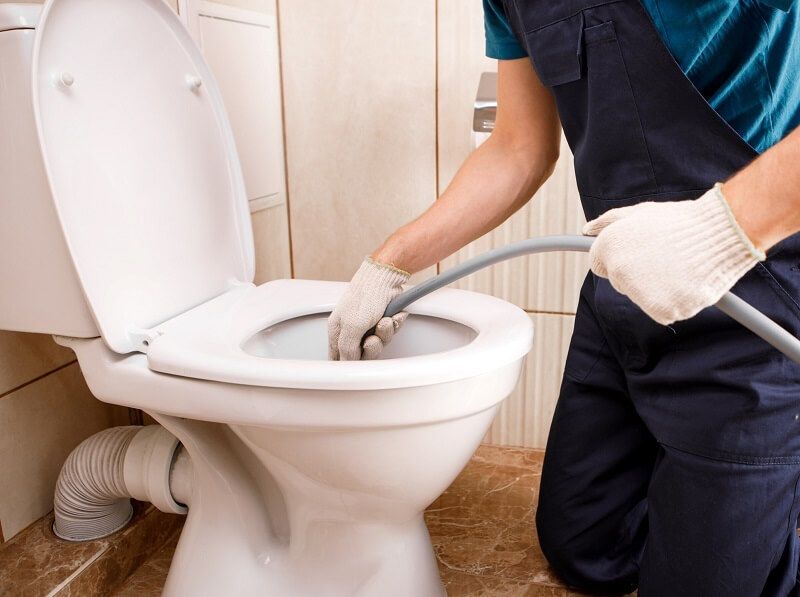
Slow Drainage Difficulties
Low-flow toilets may sometimes struggle with slow drainage, particularly if the plumbing system is old or clogged. Use a plunger to clear minor blockages.
If drainage problems persist, consult a plumber to check the pipes for deeper blockages.
Noise from Pipes
Low-flow toilets, especially those with high-efficiency mechanisms, can sometimes cause unusual noises from the pipes. These sounds could indicate water pressure problems, a partially closed valve, or air in the pipes.
Check the water supply valve, adjust it if necessary, and make sure there are no air pockets in the plumbing.
Jammed Handle
If the low flow toilet handle becomes jammed or unresponsive, it may be due to a worn-out chain or a broken lever. Inspect the internal components of the toilet tank, and replace any faulty parts.
Toilet is Leaking
Leaks around the base or tank can cause water damage and increase your water bill.
If you notice water pooling around the low flow toilet, it could be due to a faulty wax ring or loose bolts. Tighten the bolts and replace the wax ring if needed.
For leaks coming from the tank, check for a cracked tank or issues with the seal. Replacing the tank seal should stop the leak.
Understanding Low-Flow Toilets Sewage Backup
While low-flow toilets are designed to conserve water by using less per flush, they can sometimes contribute to sewage backup problems. This typically occurs when the ultra low flush toilet isn't flushing waste away effectively, leading to blockages in the pipes.
One key reason low-flow toilets might contribute to sewage backups is insufficient flushing power. Since these low water consumption toilets use less water, they rely on a smaller amount of water pressure to push waste through the drain lines.
If the pipes are partially blocked or have accumulated debris, the reduced water flow may not be enough to clear the waste.
Another contributing factor is old or narrow plumbing lines not designed to handle low-flow systems effectively. Over time, these pipes can become clogged with grease, hair, or mineral deposits, further obstructing the flow of waste.
To prevent sewage backups, it's essential to maintain proper toilet usage by only flushing waste and toilet paper. Regularly clean the pipes and check for any blockages.
If sewage backups persist, consider consulting a plumber who can inspect the drainage system and recommend potential upgrades.
Maintenance Tips to Avoid Common Low-Flow Toilet Problems
Regular maintenance can prevent many common issues, such as clogs, leaks, and reduced flushing power. Here are some essential maintenance tips to keep your low-flow toilet in top condition:
Use Less Toilet Paper
Low-flow toilets have smaller flushing systems, which can struggle with large amounts of toilet paper. To avoid clogs, use less toilet paper per flush. You can also opt for thinner or biodegradable toilet paper, which disintegrates more easily against blockages.
Keep It Clean
Regular cleaning helps maintain the toilet's functionality and extends its lifespan. Ensure you clean the bowl and tank frequently to prevent mineral buildup. Use non-abrasive cleaners and focus on cleaning the rim jets and siphon jets where debris may accumulate.
Consider a Dual-flush Toilet
If you have recurring issues with waste not flushing properly, consider upgrading to a dual-flush toilet. These toilets offer two flush options: one for liquid waste and another for solid waste.
They provide more efficient water usage and greater flushing power.
Teach Proper Toilet Use
Encourage proper toilet habits by ensuring all family members understand what can and cannot be flushed. Avoid flushing items like wipes, paper towels, and feminine hygiene products, as these can easily cause clogs and blockages.
Commit to Regular Inspections
Schedule regular inspections of your toilet and plumbing system. Check for issues like leaks, running water, and slow drainage. Early detection of problems can prevent more significant repairs and water damage in the long run.
Address Leaks Immediately
If you notice any leaks around the toilet's base or from the tank, address them immediately. Leaking toilets wastes water and can lead to higher water bills and potential damage to the flooring.
Tighten any loose bolts or replace damaged seals to prevent water wastage.
Low-Flow Toilets Pros and Cons
Like any product, low water use toilets come with both advantages and potential drawbacks. Here's a detailed look at the pros and cons of low-flow toilets:
Pros
Water Conservation
One of the most significant advantages of low-flow toilets is their ability to conserve water. It can reduce household water consumption and contribute to environmental sustainability.
This is especially beneficial in areas facing water scarcity.
Lower Water Bills
Because low-flow toilets use less water per flush, they can significantly reduce your water bill. Over time, the savings from reduced water usage can help offset the initial cost of purchasing and installing the toilet.
Eco-friendly
With growing concerns about climate change and environmental degradation, low water use toilets help reduce water waste, promoting a more sustainable living environment.
Their adoption supports efforts to minimize the carbon footprint and preserve natural resources.
Improved Plumbing Efficiency
Low-flow toilets are typically designed to work efficiently with modern plumbing systems. When properly maintained, they can reduce strain on the plumbing system.
This helps low-flow toilets to function optimally and to prevent issues such as frequent clogs or backups.
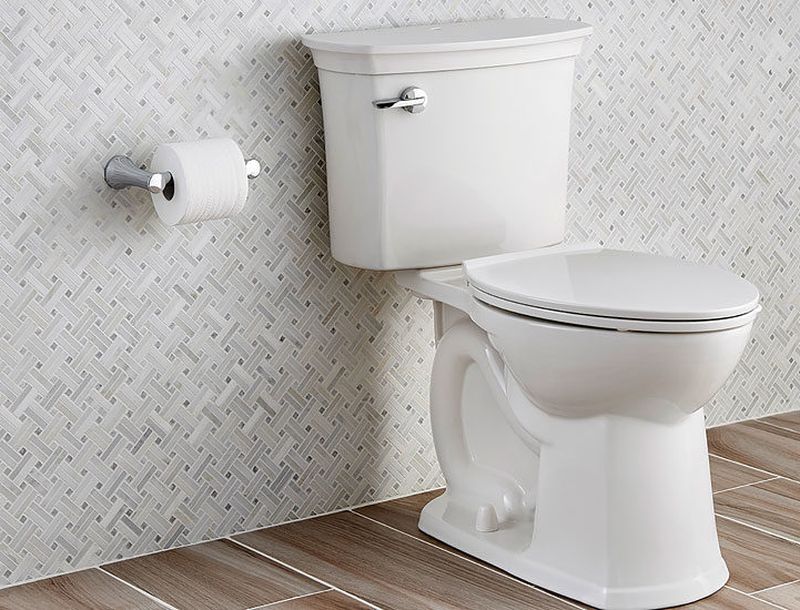
Cons
Reduced Flushing Power
One of the most common complaints about low-flow toilets is that they sometimes lack sufficient flushing power to remove waste efficiently. This leads to frequent clogs or the need for multiple flushes.
Higher Initial Cost
Low-flow toilets often come with a higher upfront cost compared to traditional toilets. While the long-term savings on water bills can make up for this initial investment, the higher purchase price might be a concern for budget-conscious consumers.
Potential for Frequent Clogs
Some low-flow toilets may have smaller or less powerful flush mechanisms, which can make them more prone to clogs, especially if too much toilet paper is used or non-flushable items are disposed of in the toilet.
Need for Regular Maintenance
Because low-flow toilets rely on specific flushing mechanisms and reduced water usage, they can require more regular maintenance to ensure proper functioning. Clogged jets, leaks, or malfunctioning flush valves can become more of a problem compared to traditional toilets.
The Cost to Install a Low-Flow Toilet vs. a Regular Toilet
When considering upgrading to a low-flow toilet, one of the main factors homeowners often think about is the installation cost compared to that of a regular toilet.
Understanding the price difference can help you make an informed decision. Here is a detailed table:
Toilet Type |
Cost of Toilet Unit |
Installation Cost |
Total Initial Cost |
Water Usage (per flush) |
Long-Term Savings (Water Bills) |
|---|---|---|---|---|---|
Low-Flow Toilet |
$100 - $500 |
$150 - $300 |
$250 - $800 |
1.28 - 1.6 gallons |
Lower, due to reduced water usage |
Regular Toilet |
$100 - $400 |
$100 - $250 |
$200 - $650 |
3.5 - 5 gallons |
Higher, due to increased water usage |
Alternatives to Low-Flow Toilets
Several alternatives address different needs, such as performance, water efficiency, and flushing power. Here are the key alternatives:
Washdown Toilets
Washdown toilets use gravity and a large trap way to push waste directly into the drain with a single and powerful flush. They are common in Europe and have a simple design that minimizes clogs. While they use slightly more water than low-flow models, their efficiency in clearing waste makes them a solid choice.
Pressure-Assist Toilets
These toilets use pressurized air to force water into the bowl, creating a powerful flush. Pressure-assist systems are excellent for preventing clogs and are ideal for high-traffic bathrooms. However, they can be noisier and costlier compared to standard models.
Siphon Flush Valve System
This system relies on a strong siphoning action to remove waste efficiently. It provides a quieter flush while using less water. Siphon systems are common in modern toilets and strike a good balance between performance and water conservation.
Dual-Flush Toilets
Dual-flush toilets offer two flush options: a low-volume flush for liquid waste and a full-volume flush for solid waste. This feature allows users to save water without compromising performance. It is a versatile and eco-friendly alternative.
FAQs
1) How can I identify if a toilet is low-flow?
Check for a label or stamp on the bowl or tank that indicates "1.28 GPF" or "1.6 GPF" (gallons per flush). Older models typically use 3.5 GPF or more. Low-flow toilets meet modern water efficiency standards.
2) How to make a low-flow toilet high-flow?
Increasing the flush power of a low-flow toilet can be done by cleaning the rim jets, adjusting the water level in the tank, or replacing parts like the flapper valve.
However, altering the flush to use more water might void water-efficiency benefits.
3) Can low-flow toilets handle solid waste?
Yes, modern low-flow toilets are designed to handle solid waste effectively. Dual-flush low-flow toilets provide a higher water volume flush for solids. In the same time, pressure-assist or siphon systems improve flushing power.
4) Is it difficult to install a low-flow toilet?
No, installing a low-flow toilet is similar to installing a standard toilet. With basic plumbing knowledge, it can be a DIY project. However, hiring a professional ensures proper installation.
5) What's the recommended method for cleaning a low-flow toilet?
Use a mild and non-abrasive cleaner and a toilet brush. Regular cleaning prevents buildup that could reduce flushing efficiency. Avoid harsh chemicals, as they may damage internal components.
Final Thoughts: Are Low-Flow Toilets Worth It?
Low-flow toilets are a practical and eco-friendly choice for conserving water and reducing utility bills. While they offer significant benefits, it's important to address potential issues such as clogs, flushing power, and maintenance to maximize their performance.
Additionally, exploring alternatives can help find the perfect balance between efficiency and functionality. Overall, low-flow toilets are worth the investment.
By choosing the right model and following maintenance tips, homeowners can enjoy the advantages of a low-flow toilet without frequent low-flow toilet problems. If you still have problems with low-flow toilets, Jabra Sanitary will help you solve the problems and provide you with some professional advice!









